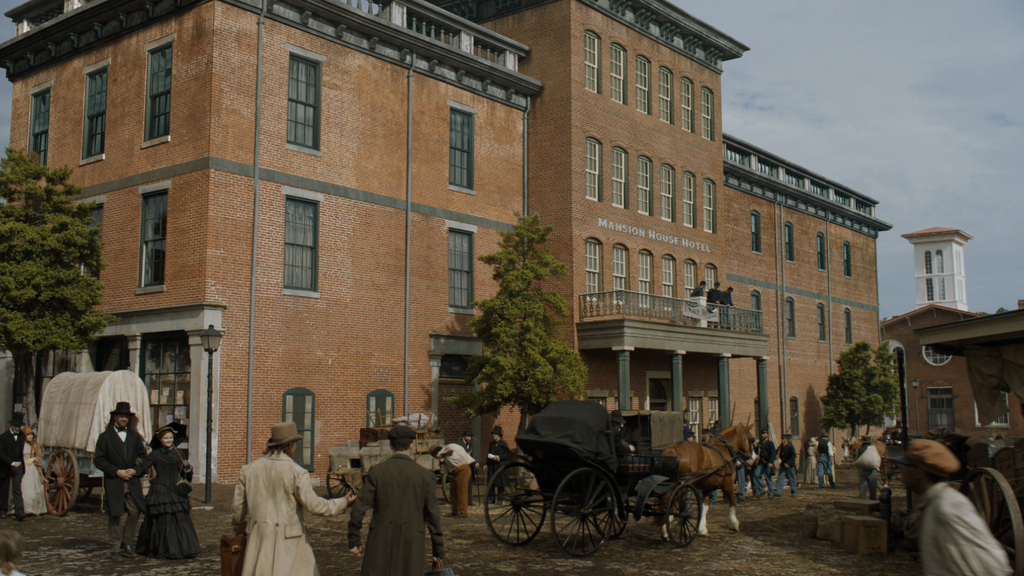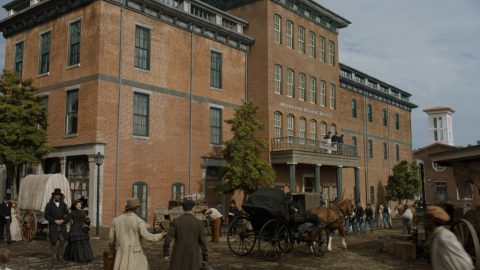ALEXANDRIA, Va. (AP) – The real “Mercy Street” depicted in the PBS Civil War drama ran down Fairfax Street in Old Town Alexandria, from the Mansion House Hospital to the Stabler-Leadbeater Apothecary.
It was an easy walk for James Green and his family, whose life in occupied Alexandria inspired the drama that returned for a second season last month on WCVE-TV. It’s still an easy walk for anyone who wants to explore the real stories behind the popular series.
As soon as Virginia seceded from the United States, federal troops crossed the Potomac River and took control of Alexandria. Southern sympathizers had to get out or go undercover in a place that was profoundly changed. Beyond the influx of soldiers, the city attracted hundreds of African-American “contrabands” seeking freedom from slavery.
Their stories have attracted a huge increase in visitors to sites associated with “Mercy Street.”
Fans of the TV series will find 35 “Mercy Street”-inspired experiences available in Alexandria this year, including exhibits, walking tours, lectures and galas that recognize the historical authenticity of the program. Just don’t expect to find settings you’d recognize from the TV screen, because the show actually was filmed on location in Richmond and Petersburg.
The Carlyle House, where the Green family lived at the start of the Civil War, had visitation increase by 110 percent in January and February last year, when the series was running. About 75 to 80 percent of visitors said the PBS series influenced their decision to visit.
Stabler-Leadbeater Apothecary Museum had visitation increase by 115 percent in January and February.
New visibility also has come to a new site, the Contrabands and Freedmen Cemetery Memorial that opened in 2014 after years of work to reclaim the site from development. On a recent visit, the soaring statue by artist Mario Chiodo, “The Path of Thorns and Roses,” held remnants of flowers left earlier to commemorate the struggle for freedom.
Bas-relief sculptures by Joanna Blake depict contrabands escaping from slavery to seek sanctuary in Alexandria and barefoot children learning to read at a freedmen’s school. Etched into the bronze walls are the names of some of the 1,800 African-Americans buried there between 1864 and 1869. Next to some of the names are buttons that signify a descendant has been found.
At Carlyle House, the focus had previously been entirely on its Colonial history. The imposing stone house was built between 1751 and 1753 by John Carlyle, a British immigrant who made a fortune in his new land and married into the fortunes of the Fairfax family. His home’s early renown came from a meeting of five Colonial governors called together in 1755 by British General Edward Braddock to seek local financial support for the French and Indian War. The friction that ensued was one of the early indications of a coming Revolutionary War.
By the time Green bought the house in 1848, it was ready for a renovation. Because of the Braddock connection, he didn’t touch the dining room or parlor where the meeting took place. Walk on those floors and you will tread on layers of American history.
Upstairs, where rooms have been returned to their Colonial configuration, the Civil War story is told in an exhibit, “Who These Wounded Are: The Extraordinary Stories of the Mansion House Hospital.” Some bedrooms are set up as if soldiers were recuperating there. At the end of a hallway, a pile of rumpled bedding and clothing indicated that a nurse might have claimed that corner.
To establish his hotel, Green had bought a former bank building at the edge of the Carlyle House’s large front lawn. When Mansion House Hotel became a roaring success, he decided to expand the only place he could – in front of his house to connect with the next street-front property. The expansion is long gone, but reminders of its existence remain in view where it was attached to the adjacent building. The bank building is now an office.
During the Civil War, Green was evicted from his house, said Susan Hellman, historic site manager, so the family interaction with the hospital wasn’t quite as intense as it is on the series. Green had several other properties where he could live and a furniture factory where his other business interests were centered.
A block and a half down the street from the Carlyle House, the apothecary shop found its location advantageous, because the hospital commissary needed medical supplies and other necessities. Callie Stapp, the curator, said the apothecary carried everything from quinine to lamp oil to window glass, judging by the entries in an 1861 account book that shows James Green buying all of those things. The commissary also had an account there.
In the new season of “Mercy Street,” said Audrey Davis, director of the Alexandria Black History Museum and a consultant on the show, the storyline will broaden to tell more about the lives of its black characters. One of the scenes will depict a contraband camp where former slaves tried to make a life in their new city.
“There wasn’t just one camp. There were really just places all over the city,” Davis said to explain the scene. “There were shanty towns, places where people were just trying to survive and get shelter wherever they could. It really was a refugee crisis in Alexandria. You read the diaries of Julia Wilbur or the letters of Harriet Jacobs (who came as aid workers). You’re walking down the street and you’re essentially coming across contrabands who may be sick or dying. … All the energy you’re needing to escape, and you’re coming to an occupied city where resources are scarce anyway. You’re not living long. That’s why the military established this cemetery. (Contrabands) were dying in such numbers. They had to do something.”
Initially black soldiers also were buried in the Freedmen Cemetery, but the soldiers protested with an 1864 petition saying that they had the right to a military burial, too. And they won.
“That’s really one of the first organized actions for African-American civil rights in this country,” Davis said. “It’s literally a Black Lives Matter moment 150 years before that term ever was coined. They’re saying, ‘Our lives do matter. Our dead patriots’ lives do matter. They need to be honored.’?”
–washingtontimes.com



